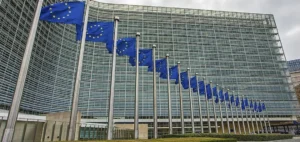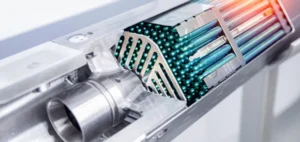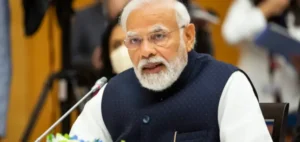Between a forest of cranes, hills of embankments and steel laces, work is in full swing at Hinkley Point C so that
EDF
to deliver two powerful nuclear reactors, eagerly awaited by the United Kingdom in search of low-carbon electrons.
After the pastures and rapeseed fields of the English countryside, it is another landscape that appears, at the edge of the Bristol Channel: old reactors under their square shelters, and next to them, new concrete monuments in full rise.
Started in 2017, the construction of two new generation EPR reactors of 3.2 gigawatts (GW), able to supply six million homes, mobilizes today 9,000 people, according to the French electricity company. The quantities are phenomenal (1 million tons of concrete), as are the machines: platform ships to install the kilometers of cooling pipes in the estuary, and even the “world’s largest crane”, capable of lifting 5,000 tons. It is “the largest construction site in Europe”, all industries combined, said EDF CEO Luc Rémont, who received the British and French energy ministers on Thursday.
In the area of the first reactor, the cylindrical building that will house the core of the system is gradually being equipped, its wall doubled. Next to it, the steel skeleton of the dome is waiting. The buildings for the pool and the emergency diesels are taking shape. In total, 3,000 British and 2,000 French companies (Bouygues, Assystem, etc.) are involved.
The reactor vessel, forged at Framatome in Burgundy, arrived by ship via the Mediterranean. EDF is now aiming for commissioning in June 2027 (June 2028 for the second reactor). But will these objectives be met, after already four cost and time revisions? The cost, largely borne by EDF, is 25-26 billion pounds (28-29 billion euros) -or 32.7 billion pounds including inflation-, compared to 18 billion at the beginning.
As for the deadlines, the head of the French group is cautiously optimistic: a construction site “is alive and complex, there may be times when things go wrong. (…) but our teams are working hard to meet this objective”.
“Showing the world”
In any case, this week was a time of satisfaction at EDF, a respite for the company faced with repeated industrial and financial setbacks. On Saturday, the Finnish Olkiluoto EPR went into commercial operation, after 18 years of construction.
With Hinkley Point, EDF hopes to turn the page on the curse of Flamanville 3, its very first EPR, which is 12 years late and has quadrupled in cost. “In Flamanville, we were building our first reactor in France, for a long, long time,” says Luc Rémont.
From now on, “with feedback” from all the sites, “we have entered a phase of industrial rhythm, of which Hinkley Point is the start, since it is the first time that two EPRs have been built at once. “The more you do, the better you are,” he says, and the proof is in the 30 percent time saved on the second reactor at Hinkley compared to the first.
The industrial issue is fundamental at a time when France wants to build at least six EPRs at home, and has renewed ambitions for exports. “Hinkley Point shows that the revival of nuclear power is underway and this is thanks to the French nuclear industry,” said French Minister Agnès Pannier-Runacher, who is very active in an alliance of pro-nuclear European states.
“We can show the world that we have an efficient and ready supply chain!” His counterpart Grant Shapps reiterated the importance of the atom, along with renewables, in the United Kingdom’s energy and climate strategy, in order to move away from gas. Once a pioneer in civil nuclear power, the country now has only nine reactors, graphite-fired models that it is gradually closing.
At this stage, it plans two other EPRs at Sizewell C (east), replicas of Hinkley Point. There remains the question of financing: after having injected 700 million pounds, London, in association with EDF, must still find capital. On Thursday, Minister Shapps told AFP that he was optimistic, although without much detail.
“It’s on track,” he assured, adding that he is working toward a final investment decision for the course of the legislature.






















